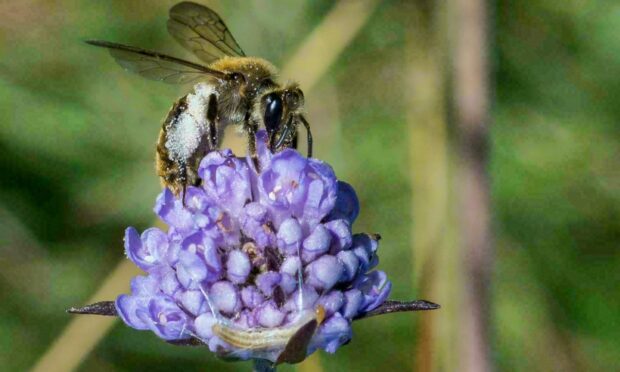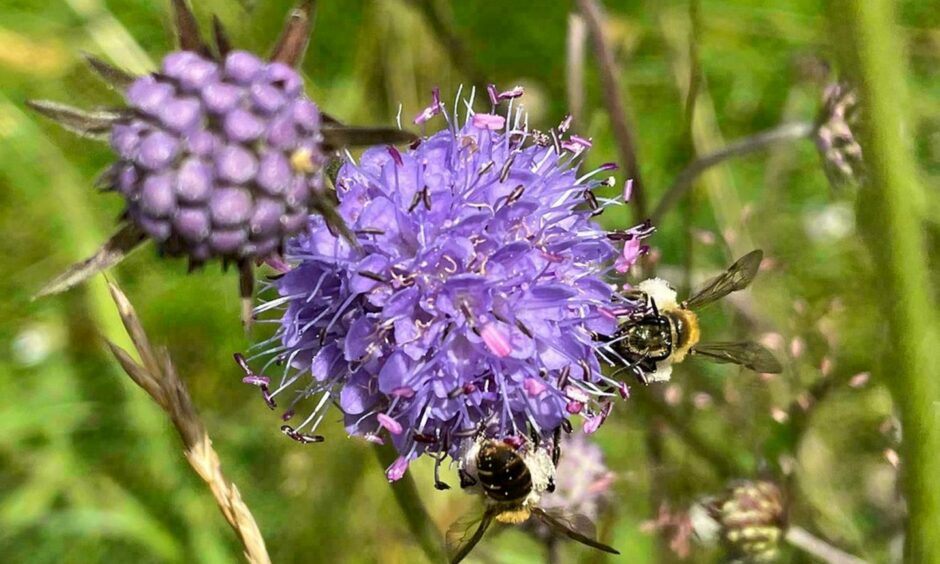Small scabious mining bees have been spotted at Highland Wildlife Park, prompting a study of these rare insects.
Highland Wildlife Park, located near Kingussie, is home to much larger animals such as polar bears, Scottish wildcats and Amur tigers.
However, for the past few years, several sightings of the “rare” mining bees on site have caused excitement.
It has a very restricted habitat in areas such as Glen Moriston, the Spey Valley around Aviemore and near Daviot, south-east of Inverness.
The population has declined in recent years due to habitat loss preferring acidic grasslands where significant amounts of Devil’s-bit scabious flowers.
Scabious mining bees studied at Highland Wildlife Park.
These flowers are where the scabious mining bee gets its name from, as it is dependent on the pollen it produces.
Bees then forage for nectar on a range of other wildflowers including Creeping thistle and knapweed.
Royal Zoological Society of Scotland (RZSS) has now completed its first-ever small scabious mining bee survey, finding 70 bees throughout August and September.
They also made found important nesting sites for the bees, intending to bridge the gap between various isolated sites where the bees are found.
The work is part of the RZSS’s pledge to help reverse the population decline of 50 species by 2030.
The ongoing biodiversity action plan spans the various ecosystems within the park and is designed to strengthen the chances for native species to thrive there.


Conversation